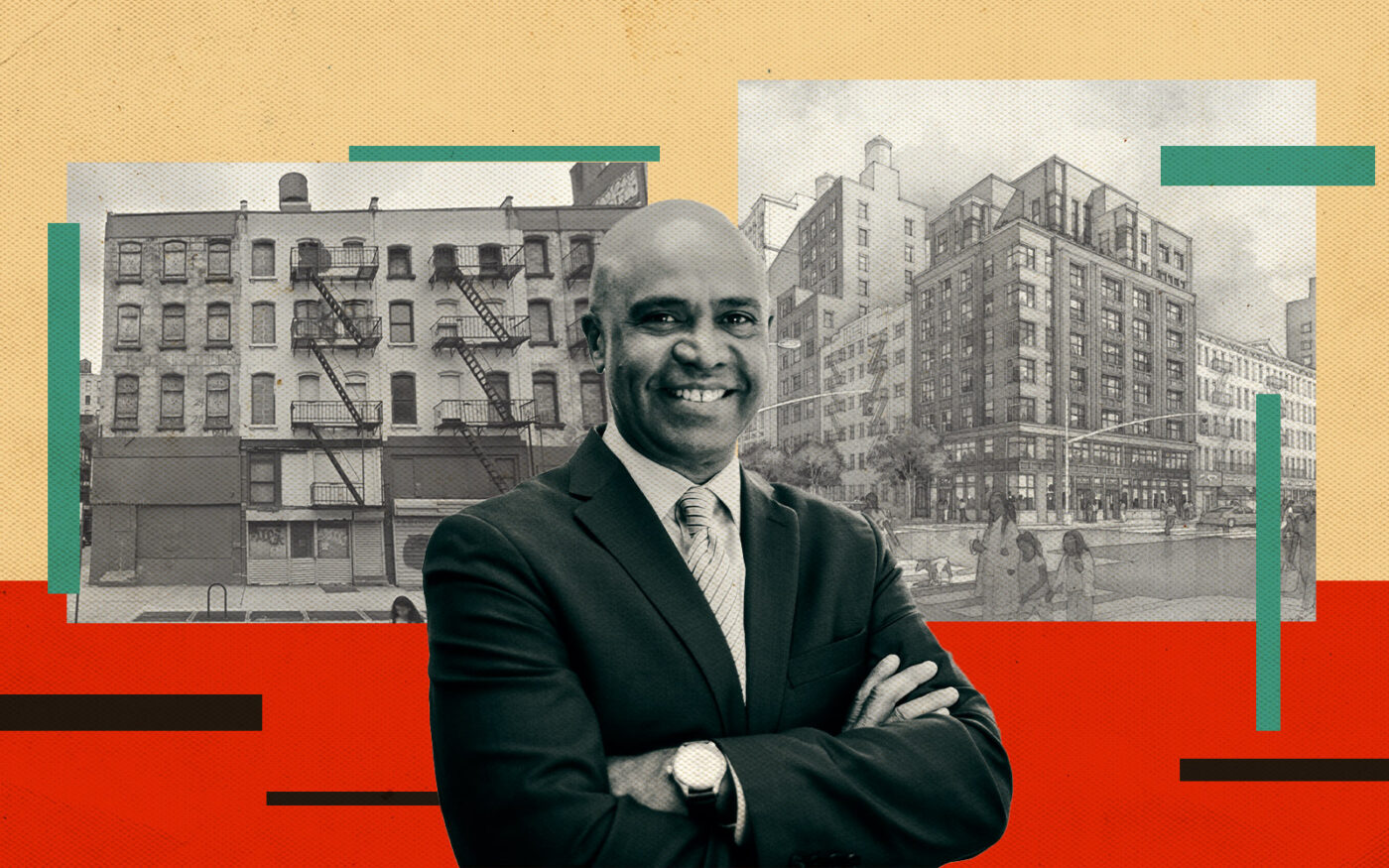 "Worst Landlords" list includes 33 HDFC co-ops
"Worst Landlords" list includes 33 HDFC co-ops
Trending
The slowest, costliest way to build affordable housing
Five renters will buy Chelsea co-ops for $2,500, but taxpayers’ bill is much larger

Turning renters of run-down units into owners of spiffy new co-ops sounds like a great idea. It is a great idea.
But sometimes great ideas don’t work out, even if politicians like to pretend otherwise.
Consider what happened at Seventh Avenue and West 22nd Street in Chelsea.
You might remember the happy headlines: Five lucky New Yorkers will buy apartments in a new co-op building there for just $2,500 — or even $250, if their incomes are low enough.
That is actually happening. Four sad rental buildings at 201-207 Seventh Avenue were torn down in 2022 and construction of a nine-story co-op is due to finish next year, NY Yimby reported in February.
City officials held a celebratory groundbreaking at the project site two summers ago. The press release was replete with flowery quotes.
“I am thrilled that after decades, these derelict and mostly vacant buildings … will finally be turned into a new, affordable housing building, and will allow for the original tenants to return to their original homes,” said City Council member Erik Bottcher. “This project is a true win for the community and New York as a whole.”
The new building will be a vast improvement for Chelsea and a blessing for the 26 new owners. The renderings and planned amenities are magnificent.
But the project is not a “true win.” It’s a Pyrrhic victory.
Set aside, for the moment, that the four demolished buildings would have never deteriorated so badly, let alone been condemned, if not for rent stabilization. We will leave that discussion for another day.
Instead, start with this: It took 44 years just to get to the groundbreaking. Forty-four years!
The owner stopped paying property taxes, which was common in the 1970s and ’80s. The city seized the buildings, but they remained an eyesore. Windows were boarded up and their facades were covered in graffiti. In the wealthy neighborhood of Chelsea, the northeast corner of Seventh and West 22nd was an embarrassment.
One of the reasons it took so long to even begin work is the difficulty of relocating rent-stabilized tenants and bringing them back as owners. It requires an enormous amount of hand-holding and persuasion. Disruptions in the tenants’ lives can throw a monkey wrench into the effort at any time.
Another complication is city bureaucracy. Just imagine how many employees came and went at the Department of Housing Preservation and Development as the agency worked on 201-207 Seventh Avenue decade after decade.
The same is undoubtedly true at Asian Americans for Equality, the nonprofit ultimately chosen to handle the project. Despite its experience — it has built or preserved more than 1,200 units across the city — the Chelsea project was a beast.

Thomas Yu, its executive director, told The Real Deal in 2022 that the development involved “often acting as social workers” for the tenants, paying architects and engineers, and being a financial guarantor for the project. He called it “a big burden for any nonprofit.”
Financing affordable housing is complex under the best of circumstances. When it comes to razing rent-stabilized buildings and constructing an HDFC co-op, it’s messier by orders of magnitude.
The Chelsea development cost $25.7 million, despite the land being free. HPD subsidies exceeded $16 million. Two nonprofits — Enterprise Community Partners and the Low Income Investment Fund — provided an $8.2 million construction loan at the below-market rate of 5.5 percent. Borough President Mark Levine kicked in a grant, too.
There was also a deferred developer fee of $1 million and developer equity of about $414,000. More money will come from sales of the 21 units being filled by lottery to households earning 130 percent of the area median income.
Even excluding the value lost by demolishing the four buildings, which had 14 apartments left and ground-floor retail, the 26-unit project is costing $1 million per unit.
The real price tag is actually far higher, given the countless thousands of hours of labor by staffers at HPD, Asian Americans for Equality, Enterprise Community Partners, the Low Income Investment Fund, the borough president’s office and Community Board 4.
A for-profit project with a 421a tax break would have taken about three years, produced more affordable housing and not cost taxpayers or charities a dime. In fact, the city could have sold the site for a pretty penny, and the tenants would have walked away with buyouts well into the six figures. Tens of millions of dollars could have gone to more efficient affordable housing programs.
Of course, there was no chance of that. The city did not turn its own property into 421a projects. Instead, its representatives in Albany killed 421a in 2022, in large part because they did not consider 130 percent AMI units — as 21 of the 26 apartments in Chelsea will be — affordable.
“Relying on luxury developer give-aways like the 421a tax abatement program to give us scraps of ‘affordable’ housing” is “scandalous,” state Sen. Brad Hoylman tweeted in 2020.
Hoylman was one of the politicians at the groundbreaking ceremony in Chelsea.
“Now more than ever, we need affordable housing, so the new development at 201-207 Seventh Avenue is welcome news,” he said at the time.
Was there a better way? Maybe the question is, was there a worse one?
Read more
 "Worst Landlords" list includes 33 HDFC co-ops
"Worst Landlords" list includes 33 HDFC co-ops
 City rescues struggling affordable co-op in Brooklyn Heights
City rescues struggling affordable co-op in Brooklyn Heights
 City mulling big changes to HDFC rules
City mulling big changes to HDFC rules




